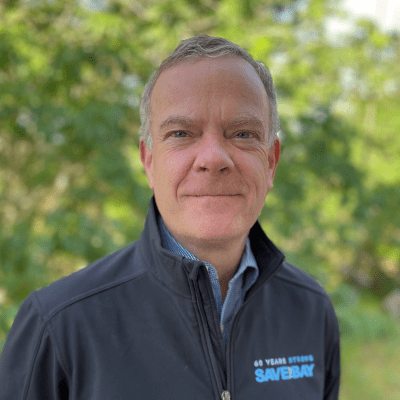Climate change is leading to heavier and more frequent storms, overtaxing our already inadequate and aging stormwater system. Communities are flooding, streets are becoming unpassable, homes and businesses are being inundated, and critical infrastructure is being damaged.
The storms of January 2023 alone cost Santa Clara County $40 million in public infrastructure repairs, plus the thousands of dollars residents are paying to repair flood damage to their homes. In San José, over a quarter of homes and almost half of roads are at risk of flooding in the next 30 years. Further, climate impacts disproportionately affect low-income communities and communities of color, who are the least financially resourced to deal with them.
A multi-benefit, nature-based solution
Green stormwater infrastructure (GSI) is a nature-based solution that introduces greening elements to stormwater infrastructure to curb flooding, filter pollution, reduce urban heat, improve air quality, and invest in community health and safety. “Gray” stormwater infrastructure uses traditional building materials like metal and concrete to build gutters, drains, pipes, and retention basins. Green stormwater infrastructure – rain gardens, bioswales, green roofs, and planter boxes – maximizes permeable surfaces, uses natural materials, and mimics natural hydrological systems. While gray infrastructure is still necessary at times, GSI provides multiple benefits and is often more cost effective.
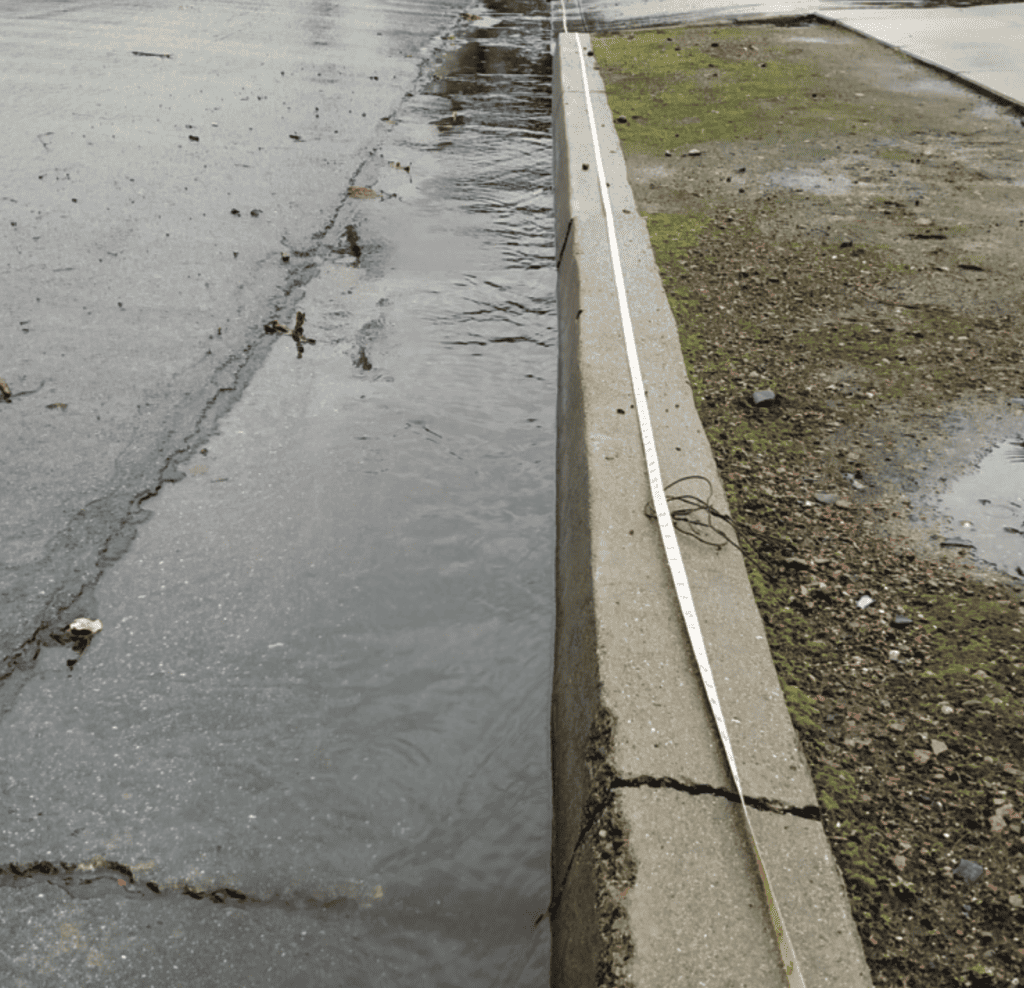
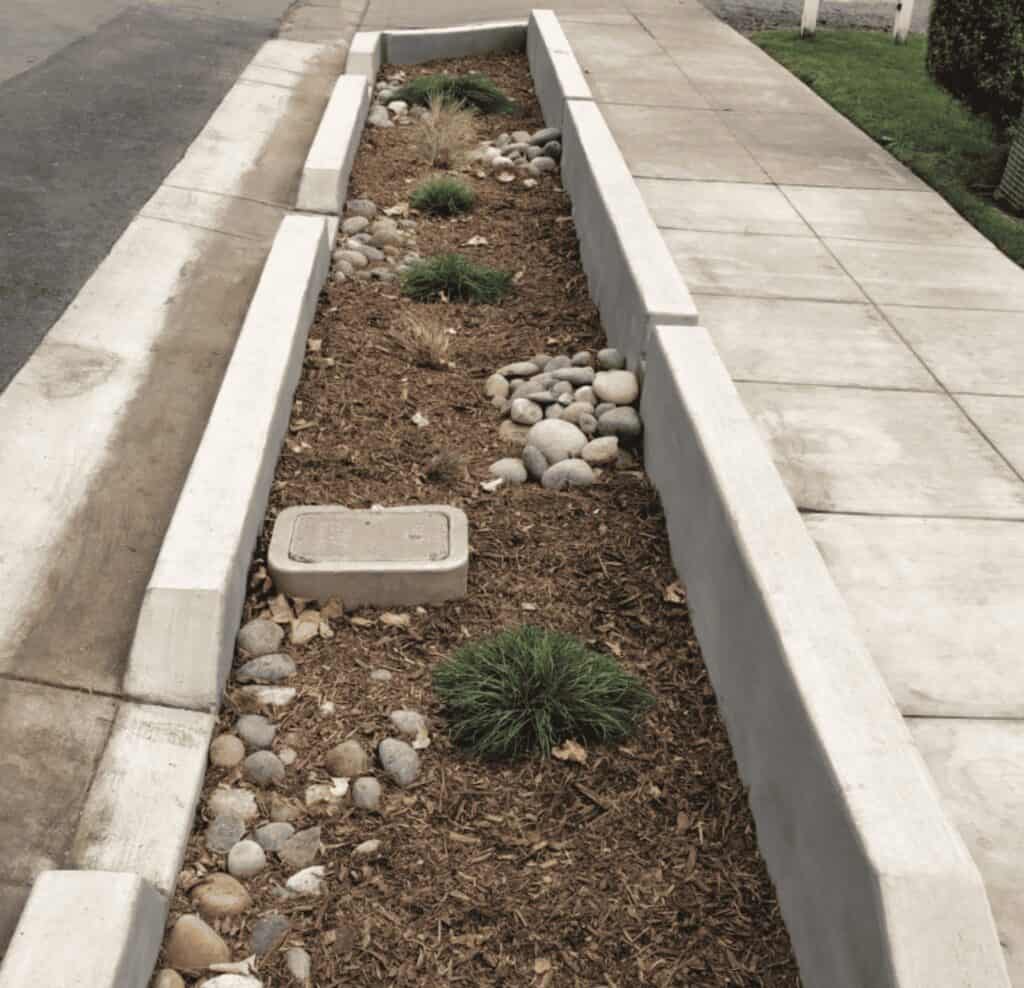
An EPA study found that capital costs for green infrastructure are 15-80% lower than gray infrastructure, and maintenance costs are about 25% lower.1 Additionally, GSI often requires less land and can be incorporated into and enhance smaller spaces in dense cities (for example, converting a vacant lot into a rain garden or a median strip into a bioswale).2 In San José, maintaining GSI projects provides youth professional development opportunities through San Jose Conservation Corps.
Cities in the Bay Area already need to to update their stormwater systems and reduce pollution runoff into the Bay to adhere to new legal requirements. Implementing GSI will solve multiple problems while investing in those communities.
So how do we get more green stormwater infrastructure?
One of the major barriers cities face to implementing more GSI is a lack of funding. Stormwater must be funded by voter-approved taxes, and can’t be funded by rate payers. Existing state and federal revenue streams often disincentivize incorporating GSI into other projects, because flood resilience isn’t valued in scoring criteria. However, new funding opportunities are opening up. Caltrans, through the federal infrastructure bill, has resilient transportation grants, and EPA’s San Francisco Bay Water Quality Improvement Fund can both be used to build more GSI projects.
However, building the projects is only half the battle – they also must be maintained. Maintaining infrastructure is often a challenge for municipalities, and cities that are used to maintaining pipes don’t always know how to maintain plants. Fortunately, youth workforce development programs are stepping in to provide green job training for young people while also providing the necessary service of maintaining GSI.
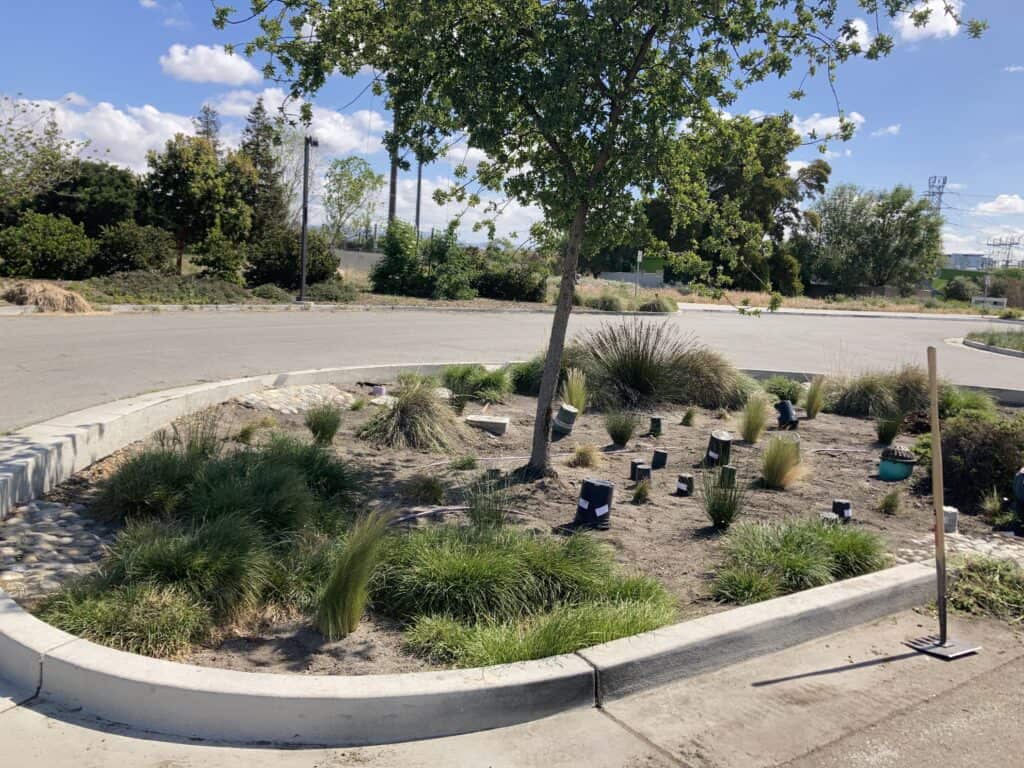
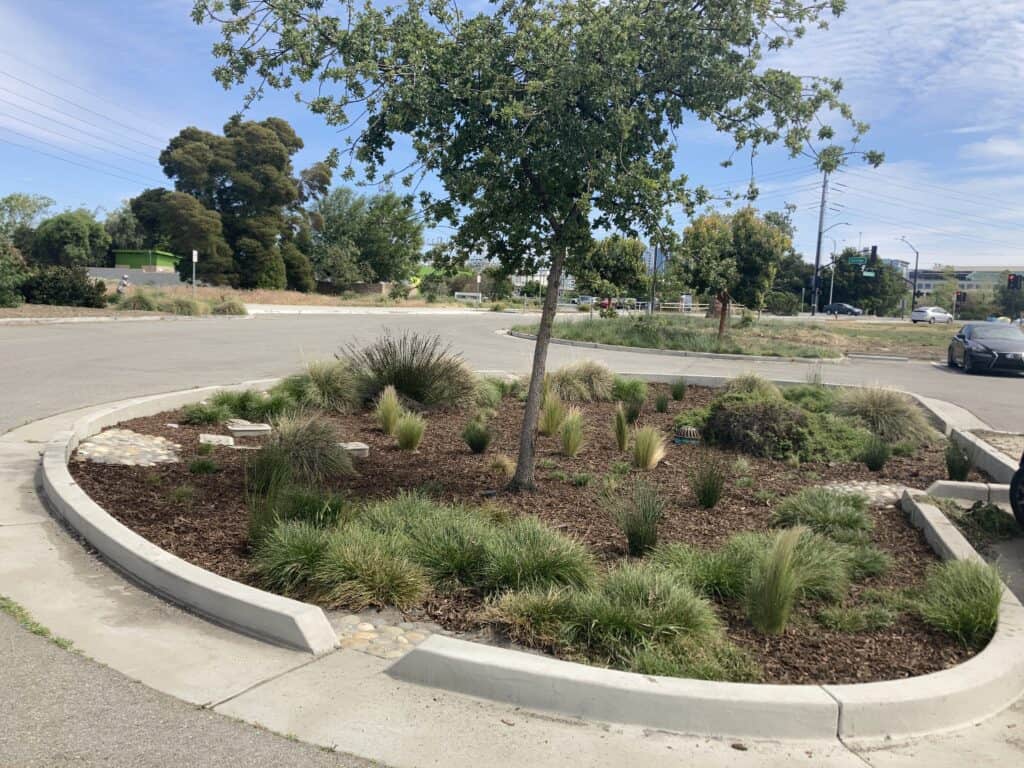
Forward-looking cities such as San José are also seeking to fund stormwater program upgrades through new revenue sources. New funding allows cities to be innovative – we can’t just build more of the status quo, we need to take these opportunities to envision what a resilient city could look like. As San José explores new revenue, it should also be imagining a city full of multi-benefit green infrastructure that keeps residents and infrastructure safe from floods, cool in the heat, and healthy in the streets – prioritizing funding for green infrastructure investments.
In June, Save The Bay partnered with the San Jose Conservation Corps to bring two city councilmembers, Councilmember Peter Ortiz and Councilmember David Cohen, on a tour of three examples of green stormwater infrastructure in the city. We talked about why GSI is important, and how they can champion these important investments. We also looked at a high priority site for a green street investment – one that could be green, climate resilient, and beautiful, with the right kind of planning and investment.
The stretch of E. Santa Clara St. from Coyote Creek to Bayshore Freeway is a high-injury corridor, has a high heat index score, and is in a low-income neighborhood. It’s also identified in the City’s green stormwater infrastructure plan. If the City coordinates across these multiple priorities, this corridor could be transformed into a safe, climate resilient, green street. By including green elements to traffic-calming infrastructure and bike lanes, San José can address multiple hazards with one, climate resilient approach.
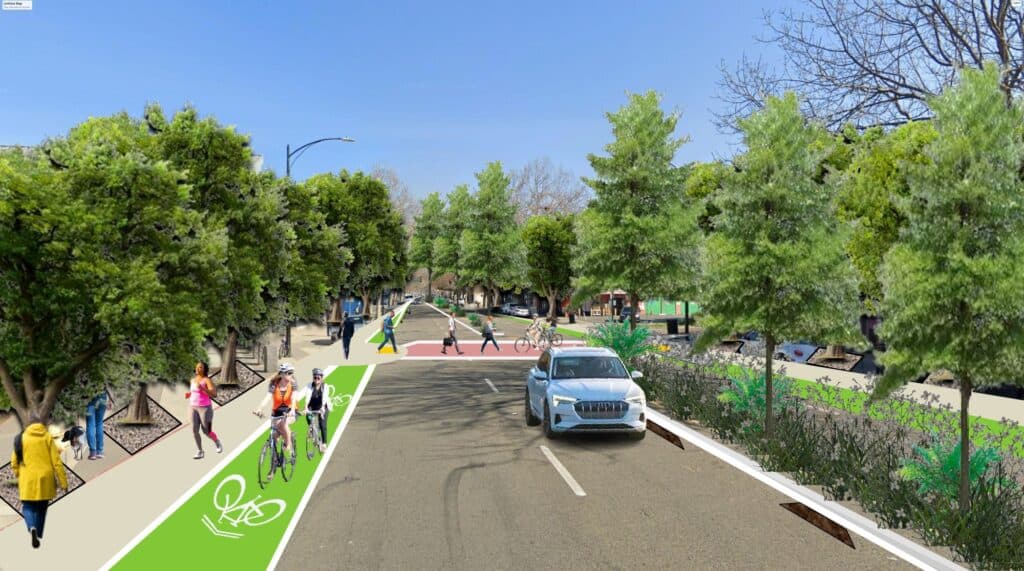
Toward More Flood Resilient Cities
Save The Bay is working to ensure cities like San José are pursuing policies that plan for climate change. General plans, ballot measures, and zoning ordinances are all opportunities to ensure that every infrastructure project and new investment is also considering flood resilience and prioritizing nature-based solutions. While the cost of preparing our cities for climate change is enormous, it’s more expensive every day we wait – both for the solutions, and for the impacts of climate catastrophes that are already upon us.
1 U.S. Environmental Protection Agency, Reducing Stormwater Costs through Low Impact Development (LID) Strategies and Practices, December 2007, 27; 2 U.S. Environmental Protection Agency. The Importance of Operations and Maintenance for the Long-Term Success of Green Infrastructure, March 2013, 7.
2 Laane 30, Liquid Assets: How Stormwater Infrastructure Builds Resilience, Health, Jobs, & Equity, 2018, 14.







































